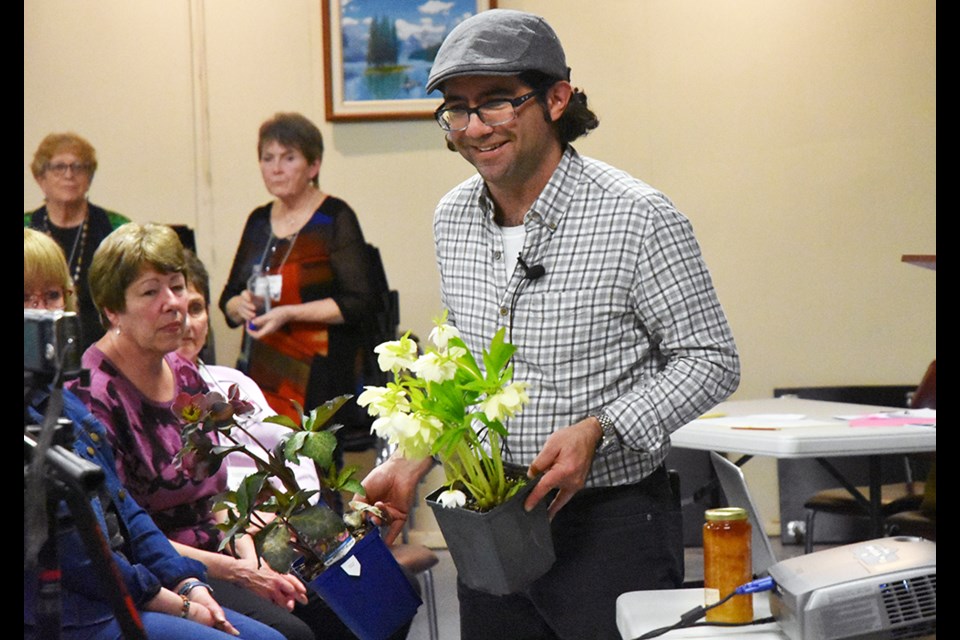Paul Zammit, the high-energy director of horticulture at Toronto Botanical Gardens, encourages you to turn your garden into a smorgasbord.
He was in the region recently speaking to gardeners. His speech was titled, Inviting guests into your garden – planting for pollinators.
Zammit, who said he's passionate about gardening, provided a primer of the sex life of plants and the importance of pollinators to the reproduction of “88 per cent of plants globally.”
“It’s an amazing relationship,” he said.
Flowers have evolved to “lure them in, give them a little bit of nectar, get them messy – covered in pollen.”
Then the pollinators – not just honey bees, but solitary bees, bumblebees, flies, moths, butterflies, even beetles and hummingbirds – go on to the next flower, transferring the male pollen to the female pistil, making it possible to set fruit and seeds.
“I think we really need to rethink our gardens, really rethink beauty,” Zammit said.
Gardeners used to go for “perfection,” dead-heading flowering plants, cutting back last year’s hollow stems, using pesticides to “annihilate,” and opting for hybrid, showy double- and multiple-bloomed varieties.
But those past-their-prime flower heads provide food for birds, hollow plant stems provide nesting sites for solitary mason and leaf-cutter bees, pesticides don’t discriminate between “good” and “bad” insects, and those multiple blooms may not produce any nectar.
"Nectaries get converted to petals,” Zammit said. The question gardeners should ask is "not is it beautiful, but is it alive?”
Let the garden get a little messy, Zammit urged.
Leave the seed heads on the plants. Don’t go “mulch-mad” but leave some bare ground for ground-nesting pollinators.
Let clover pop up in the lawn, or throw some crocus bulbs in with the grass seed; the crocuses will finish flowering by the time the grass is ready to mow.
Even leave a few dandelions for the bees.
And plant a “salad bar” for pollinators that will flower all season long.
“What do pollinators need? They need the same things you do. They need water, food and shelter,” Zammit said.
Gardens provide important habitat for pollinators, overcoming the fragmentation of natural habitat created by development. They can also add greater genetic diversity for the plants themselves, and support the food chain.
Zammit brought along his own props.
A flowering rose bush was used to illustrate how leaf-cutter bees – a solitary bee that can be 20 times more effective as a pollinator than a honey bee – cut pieces of a leaf to line their nests.
Two different species of hellebore demonstrated the difference between singles, and double-bloomed hybrids that actually discourage visits from pollinators.
And he handed out small sticks of honey, representing “what a worker bee will produce in her lifetime… It takes two million visits to flowers to collect enough nectar to produce 500 grams of honey.”
“Not that long ago there was negativity around bees" because they sting, Zammit said, but attitudes are changing.
“What I love about gardening (is) you never stop learning.”
He left some some final advice: “Be very aware. Be very conscious of the choices you make… Buy plants that get eaten – it’s a good thing!”
And, he added, “if you plant it, they will come.”
